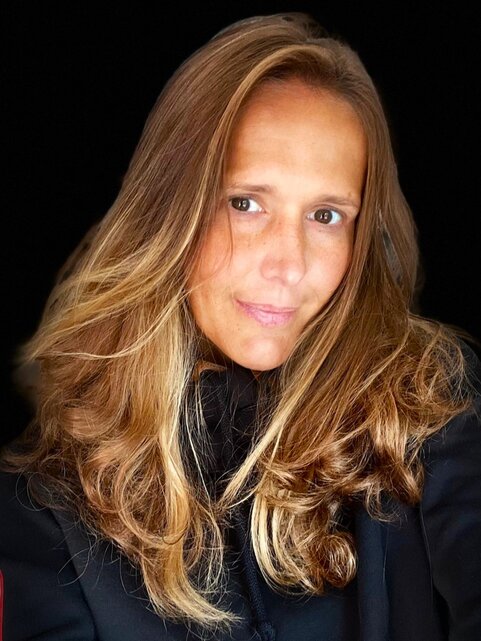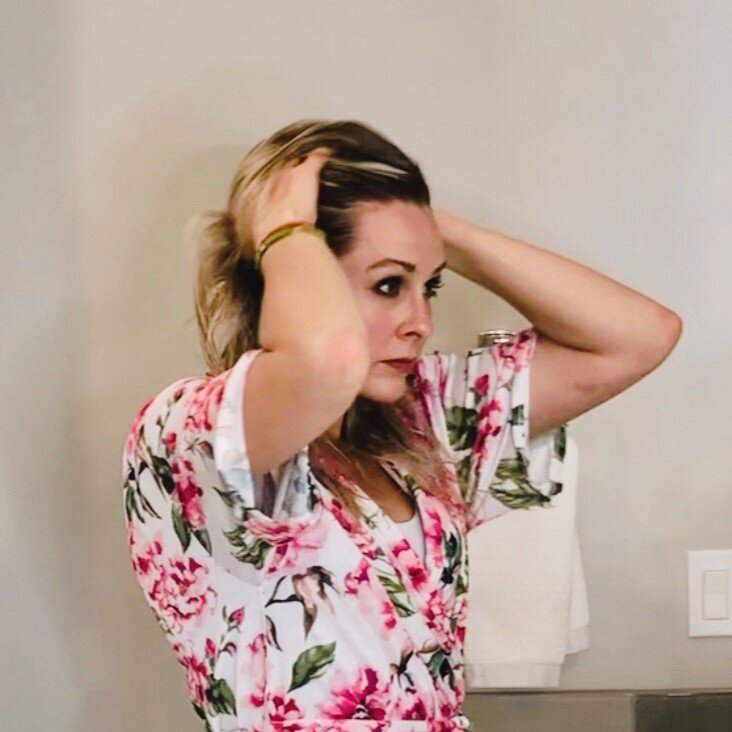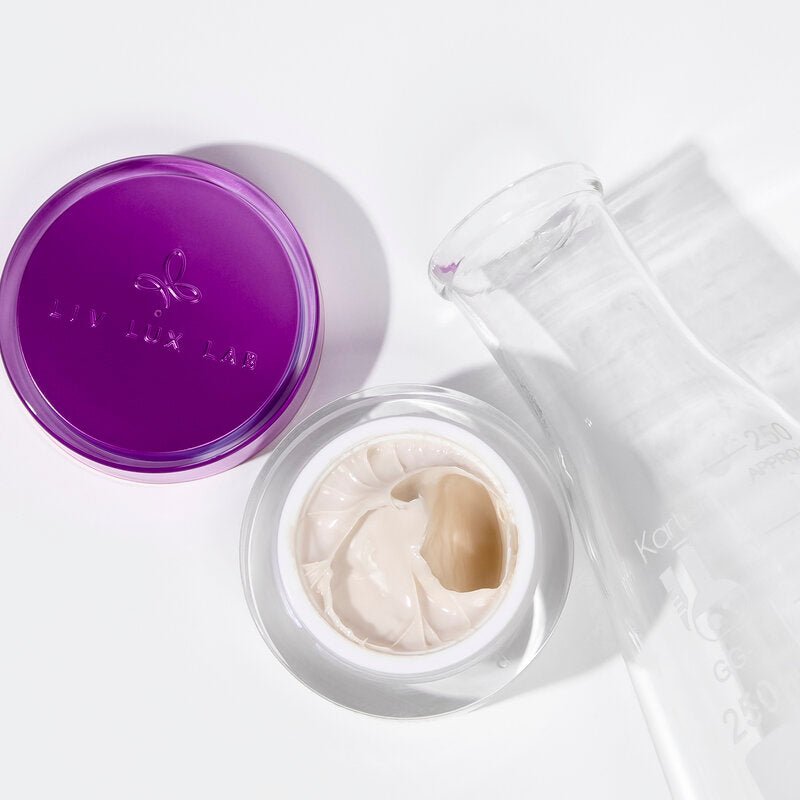If you’ve been having trouble finding hair products that just work for your hair, it could be because you haven’t found the right hair product for your hair type. When it comes to the skinification of hair care products, determining your hair type is just as important as knowing your skin type for an effective skin care routine.
How do I identify my hair type?
Hair type is determined by several factors, including genetics. At the root of hair type, is hair texture. Hair texture generally refers to the shape and pattern of your hair strands. Do you have straight hair, wavy hair, curly hair or coily hair? It’s possible you don’t know! One of the most common hair types is straight hair. Determining your hair type is an essential way to help choose the right products to care for and help repair your hair. For example, maintaining curly and coily hair can require more conditioning and moisturizing hair products, unlike straight hair which can become weighed down and needs lighter hydrating hair care. However understanding the different hair types isn’t quite as simple as saying you’re in 1 of the 4 hair type categories. Hair damage can affect hair type and there are also several subcategories within the different types of hair. Your unique hair type deserves a customized hair care regimen that caters to your individual hair concerns and needs.
Check out 5 ways you can you tell if your hair is damaged, here.
What is my hair type?
There are four main types of hair:
- Type 1: Straight hair
- Type 2: Wavy hair (“S” shaped)
- Type 3: Curly
- Type 4: Coily hair (tight curls)

What is my hair structure?
Each hair type can be further broken down into a subcategory of A, B, or C based on the hair's curl patterns, density, porosity, width, and length. Most often when we’re talking about hair structure, it has to do with the thickness of your hair strands. Do you have fine hair, medium hair or coarse hair? As easy way to determine if you have thick or thin hair is to take a single strand of hair from your hair brush (And don’t worry, having a few hair strands in your brush is totally normal. However, if you’ve recently noticed hair loss and wondering how to grow hair back, you may want to check out this article.) Lay the strand of hair down on a plain, flat surface. Next, cut a piece of sewing thread that about the same color as your hair and cut it so it’s about half a foot long. Place the two side-by-side. If your hair looks to be thinner than the sewing thread, you have thin hair. If your hair seems to be thicker, you guest it. Your hair is likely to be thicker. If your hair is the same, then it would be medium.
How can I determine my hair porosity?
Poro-what? When we talk about hair porosity, we’re talking about the hair’s ability to absorb water, moisture and product. Think of it like you have “pores” on your hair. Now porosity isn’t necessarily a hair type but since it can greatly determine how your hair behaves and looks, we feel it’s important to mention. If your hair is too porous or of high porosity, your hair can absorb too much moisture. This can cause unhealthy swelling of your hair. When your hair swells, cuticles rise, hair tangles easy, hair is frizzy and can be unmanageable. When hair is of low porosity, the cuticles could be locked up tighter than Fort Knox. This could be the case if you have virgin hair, have never colored it and rarely use heat. When hair is of low porosity, it can experience more product build up because hair products with good ingredients aren’t able to absorb or take longer to absorb. It’s the goldilocks affect here. You want just the right amount of porosity for your hair! You can read more about the best ingredients for hair porosity here. An easy way to determine your hair porosity is to grab a strand of hair from your brush again and place it in water. If the strand sinks to the bottom, its highly porous and a product rich in oils like Save Me From Thermal Obsession can greatly help. If the strand floats on the surface, it does not absorb moisture as easily and its good to opt for a lighter hydrating product like Save Me From Age Acceleration which can help thicken hair.

At the root of healthy hair, is always a healthy scalp.
Chances are you already know, if you’re not treating and nourishing your scalp, your hair is hurting. Taking care of your scalp should be a priority. So to make things easier, it helps to know, do you have a dry scalp, a normal scalp or an oily scalp? Always opt for scalp products that are gentle, made for skin care and won’t make the hair greasy. This is why its so important that Save Me From was founded by a skin care expert who understands skin care but is a scientist who also understands the physiology of healthy hair. Every product was made prioritizing scalp care and a good hair day, the products are concentrated but when blended with water and paired with a nice scalp massage, the hair is never greasy.
How to Care for Type 1 Straight Hair
Type 1 hair is straight hair and is often referred to fine hair texture. Fine hair can easily become oilier and more weighed down. This is because fine hair typically has more hairs in a square in and each hair strand is attached to its own oil gland. As a result, the hair produces more oil! Our tip, use a lightweight product. Now this doesn’t mean shy away from hair oils. Your hair could still use them and your scalp can benefit too. Just choose products formulated with light hair oils and may we also suggest Hemisqualane and hyaluronic acid for hair?
- Type 1A hair is stick straight and fine.
- Type 1B hair is thicker – but is still very straight with medium texture so it has more volume.
- Type 1C hair is very thick and coarse, but still straight and shiny so it can be hard to make curls hold and last longer.
How to Style Type 2 Wavy Hair
Type 2 hair is in between straight hair and naturally wavy hair. It can have more curl than some types of hair but usually less than others. Wavy hair is more likely to become frizzy than straight hair and can be a little easier to style and hold a curl. Because of you’ve been blessed with the ease of styling, you’re likely to attempt to do more to your hair. Don’t forget to use hair products with protein such as Save Me From Chemical Conflict Hair Repair to keep your hair strong and healthy while you play.
- Type 2A hair is wavy and can be fine and thin or a little coarser in texture. It normally has S-shaped waves and is easy to style.
- Type 2B hair is wavy and medium thick, with more distinct S-waves and prone to frizz.
- Type 2C hair has distinct S-waves with more spiral curls that are thick and coarse. It can get very frizzy and may be hard to style.
How to Care for Curly Hair
Type 3 is curly hair that looks like the letter "S" or "Z". These types of curls go straight when the hair is wet and then go back to being curly and voluminous as it dries. It is easy to style and has clear springy curls.
- Type 3A hair is thick with big, loose spiral curls that can also get frizzy.
- Type 3B hair have a combination of bouncy ringlets and tighter curls.
- Type 3C hair has very tight, corkscrew curls.

How to Care for Coily Hair
Type 4 hair is coiled very tightly. It is often very coarse, but it is also very fragile and easily damaged.
- Type 4 hair that is healthy, is soft, with tight and well-defined S-curls.
- Type 4B hair is also soft and fragile, with very tightly coiled with Z pattern curls.
- Type 4C hair has such tight curls that it may have less defined curls, often Z-patterned curls that are tightly kinked.
With both Type 3 and Type 4 hair, its important to be gentle with your hair. If you care about preserving your curls, limit the amount of heat and styling you do. With all hair types, when you use heat styling tools such as blow driers, curling irons and straight irons, hair is damaged. Your hair type and hair texture can change with damage. It may take some time for your hair to regain its shape. Hair treatments like Save Me From Thermal Obsession Heat Protectant can protect your hair from heat up to 450 degrees, which can also help preserve your hair type and hair texture from damage in the first place. Hair repair products like Save Me From Chemical Conflict have bond rebuilding capabilities which helps correctly relink the bonds in your hair for its correct shape. Using a curl reshaping product like Save Me From Chemical Conflict will require patience but with consistency, it can help correct hair damage and restore natural hair curl.
Read more about how Save Me From can restore hair bonds, here.
Still unsure what category you fall into?
If you’re unsure about what category your hair falls into, leave your hair free of products and let is air dry the next time you wash it. If it dries straight without bend of curl, then you have type 1 straight hair. If it dries with a slight “S” shape curve, then its considered type 2 wavy hair. If your hair dries with a defined curl or loop pattern, you have one of two curl types, Type 3 curly hair has springy ringlets and Type 4 is defined as having more dense spirals and a zig-zag pattern.
Fenugen, The Fenugreek Rich Hair Treatment for Healthier Hair
It's worth mentioning the hair reparative benefits of Fenugen for all hair types. Inspired by Ayurvedic medicine, Fenugen captures the most active parts of fenugreek and unleashes its rich phytonutrients into a concentrated and purified active ingredient. Fenugreek phytonutrients include medium and long chain fatty acids, terpenoids, polyphenols, phospholipids and vitamins A, C and B variety vitamins (including vitamin B3 for hair benefits) and paired these with bio-boosters like ubiquinone (also known as Coenzyme Q10 for hair), organic Karanja (also known as Pongamia for hair benefits) and medium chain triglycerides (MCT’s derived from coconut for hair). As you age, scalp inflammation and imbalances can lead to inflammation and hair thinning. Fenugen is a rich source of nutrients with anti-inflammatory properties – in addition to phospholipids such as phosphatidylcholine, conditioning mucilage & vitamins A, C & several B that replenish your hair’s hydration, restores healthy porosity and lightly condition your hair. Through a patented eco extraction process, we've magnified fenugreek’s phytonutrients and phospholipid content into our clinically proven technology. Fenugen possesses the rich nutrients of fenugreek seeds in a complex 5x more potent in its phytonutrients. These nutrients include Vitamin A, B Vitamins, Vitamin C and more. With consistent, long-term use, hair bonds are rebuilt, hydration is restored helping to reduce frizz, the scalp is energized and nourished from within allowing hair that's more resistant to damage to emerge. Rooted in Ayurveda, our Fenugen is the best ingredient for healthy hair - clinically proven to transform hair from tip to root, inside and out.





